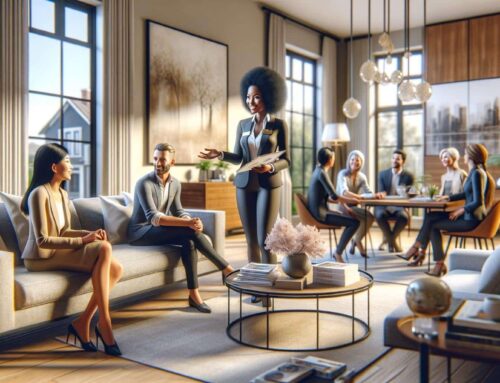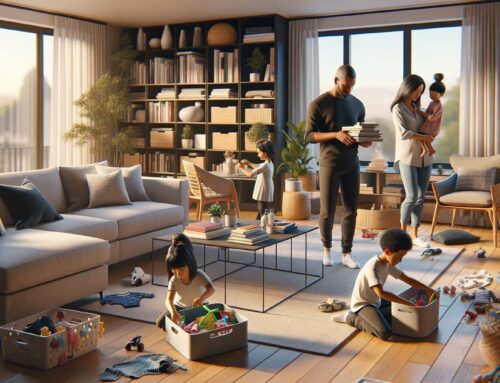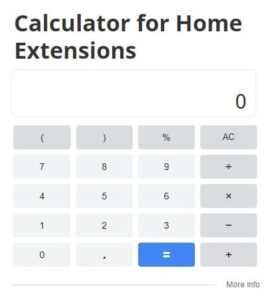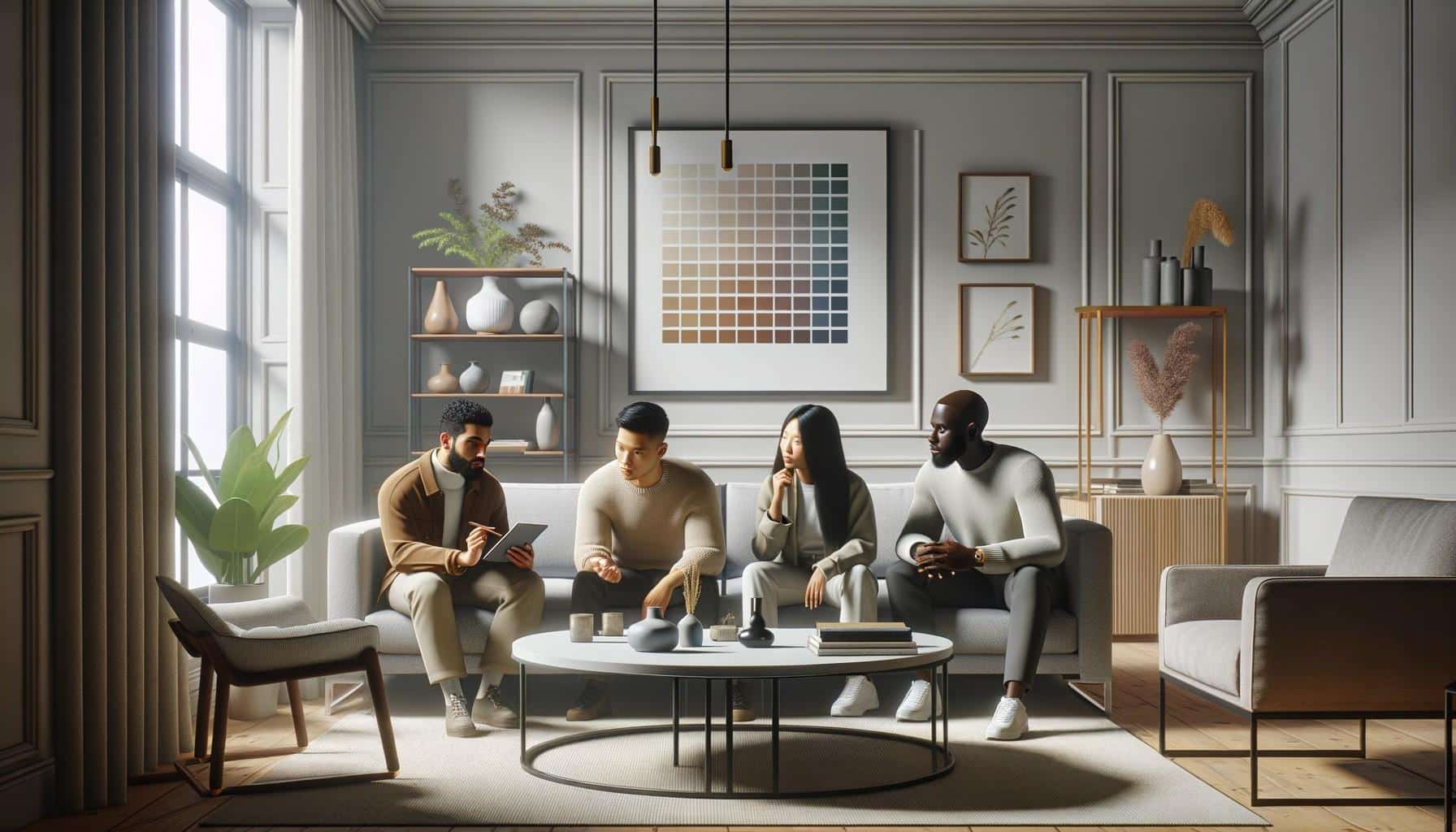
Home decoration transforms your living space into a personal sanctuary that reflects your unique style. We at Home Owners Association know that effective interior design doesn’t require expensive renovations or professional help.
The right tips on home interior decoration can dramatically improve your home’s comfort and value. This guide provides practical strategies that work within any budget and timeline.
Planning Your Interior Design Strategy
Assess Your Space and Natural Light
Successful interior design begins with understanding what you already have before you add anything new. Walk through each room at different times of day to observe how natural light changes throughout your space. North-facing rooms receive consistent but cooler light, while south-facing spaces get the warmest natural illumination. This affects how paint colours and fabrics will actually appear once you install them.
Document your space with accurate measurements and photographs from multiple angles. Interior designer Tina Flint Huffman recommends that you create a scaled layout to prevent costly furniture mistakes. Test paint samples at different times to see undertones shift with light conditions (as Benjamin Moore experts recommend).
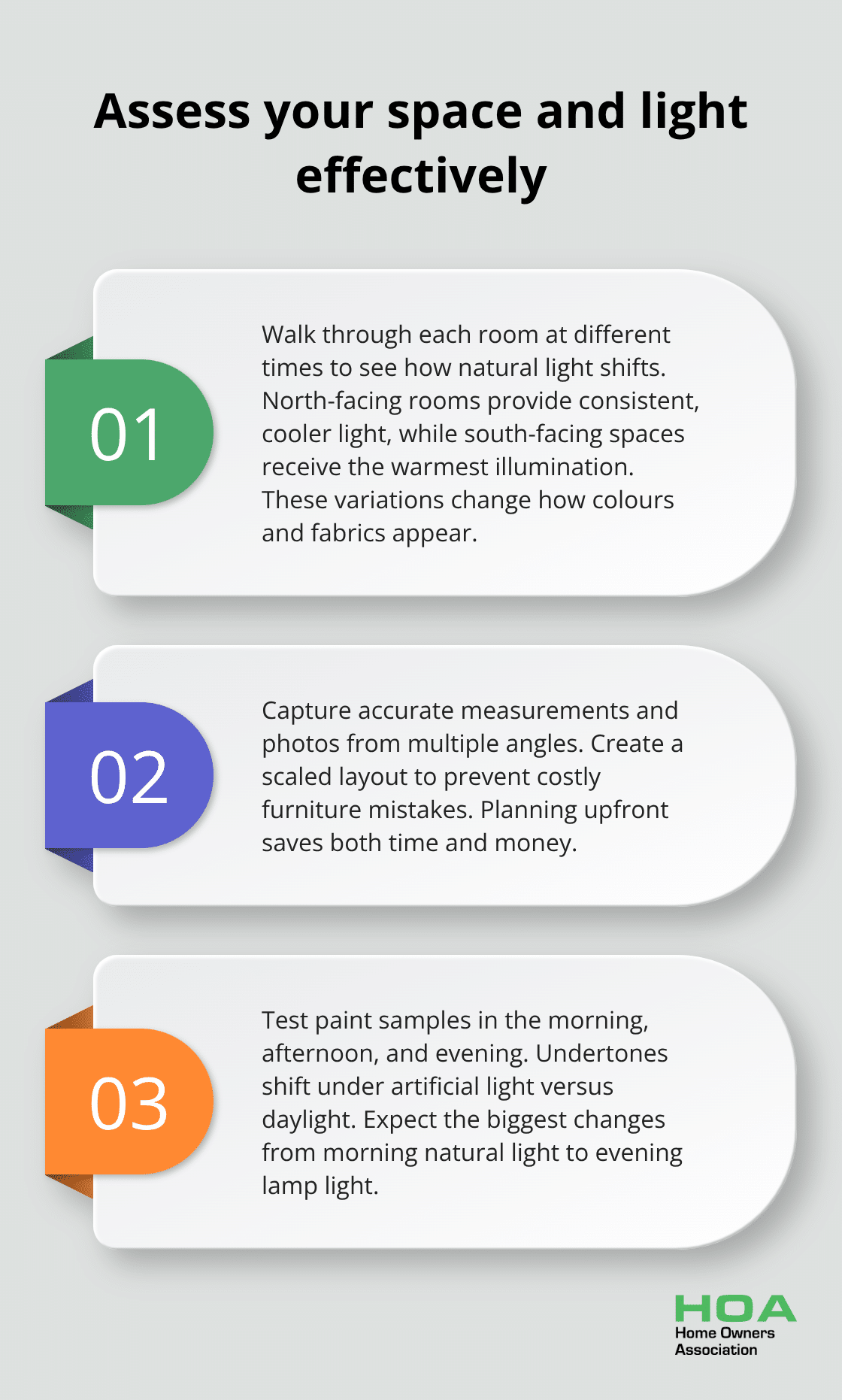
Define Your Personal Style and Budget
When budgeting for interior design, remember that there are no strict rules and limits for how you allocate your funds. Create a Pinterest board or physical mood board to identify patterns in your preferences. This prevents the scattered look that comes from impulse purchases.
Select a “springboard object” that serves as your inspiration piece to guide your overall design direction. Browse design magazines, visit showrooms, and create mood boards to help you maintain consistency throughout your project and avoid piecemeal aesthetics that lack cohesion.
Create a Room-by-Room Priority List
Start with rooms you use most frequently rather than guest spaces or formal areas that see limited daily traffic. Your master bedroom and main living area should take priority over decorative spaces (since these impact your daily comfort most significantly).
Focus on one room at a time to avoid overwhelming yourself with multiple projects. This systematic approach allows you to perfect each space before moving forward and helps you learn what works best in your home. The next step involves understanding the fundamental design principles that will guide your decoration choices.
Essential Design Principles for Every Home
Colour Theory and Paint Selection Techniques
Colour choices determine whether your home feels spacious or cramped, warm or cold. Warm neutrals have replaced millennial grey as the preferred base, with warm white being the most popular interior paint colour choice. Test paint colours at three different times during the day because artificial light changes undertones dramatically. Benjamin Moore experts confirm that colours shift most noticeably between morning natural light and evening lamp light.
Limit your palette to three main colours per room to avoid visual chaos. Choose one dominant colour for 60% of the room, a secondary colour for 30%, and an accent colour for the remaining 10%. This 60-30-10 rule creates balance without overwhelming your senses.
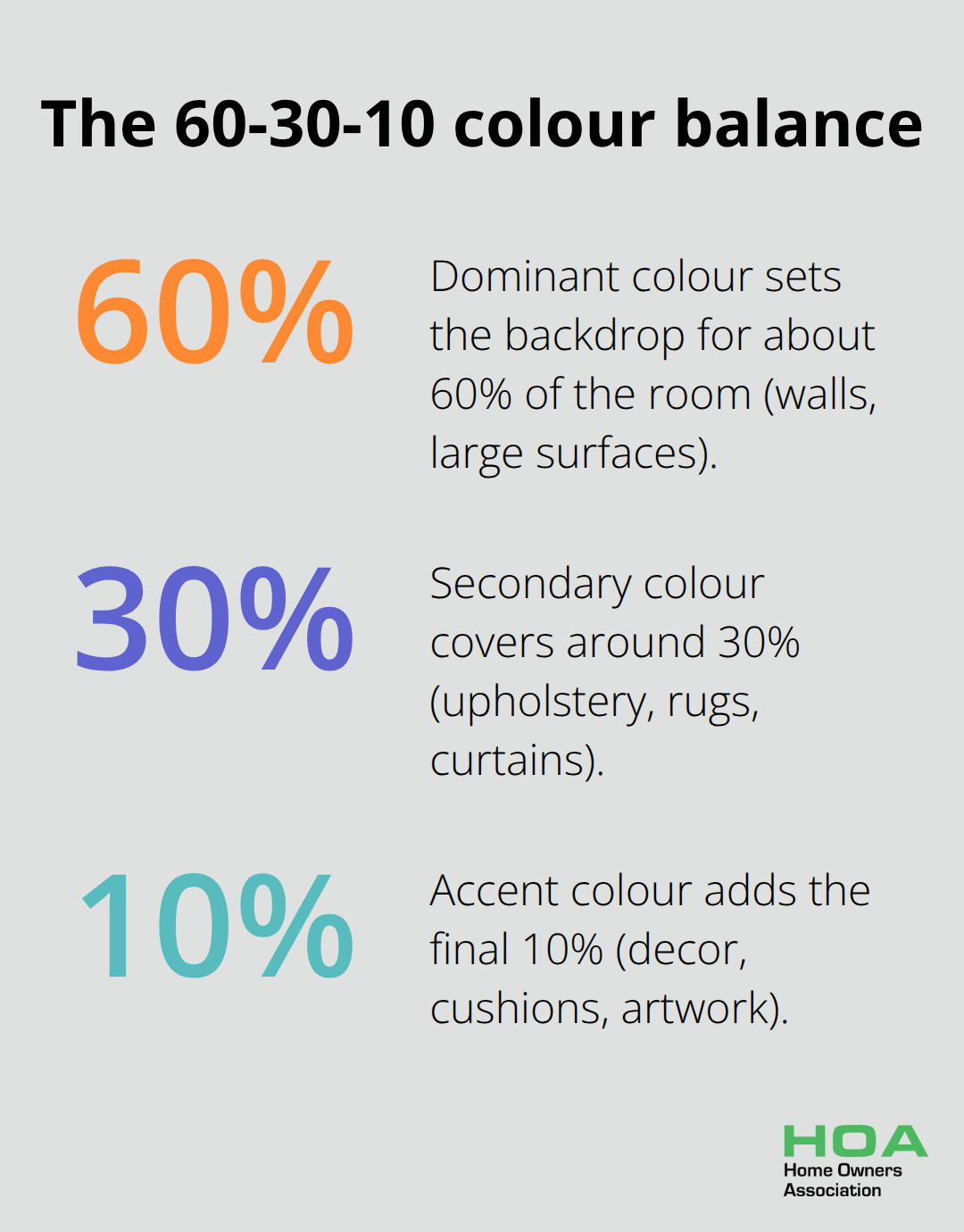
Furniture Arrangement and Space Optimization
Place your largest furniture pieces first, then work down to smaller accents. Leave 18 inches between seating areas for comfortable conversation flow. Interior designer Tina Flint Huffman emphasizes that furniture should sit partially on area rugs rather than float completely off them.
Position sofas perpendicular to windows rather than block natural light sources. Mix wood tones throughout your space instead of match everything perfectly (this creates depth and prevents the sterile showroom appearance that dominated previous trends). Scale matters more than matching when you select furniture pieces for any room.
Lighting Design and Fixture Placement
Layer three types of light in every room: ambient overhead sources, task options for specific activities, and accent pieces for visual interest. Replace oversized statement fixtures with smaller, architectural pieces that complement your room’s proportions. Install dimmer switches on all overhead lights since fixed brightness rarely matches your daily needs.
Position table lamps at eye level when seated to prevent harsh shadows on faces during conversation. Add under-cabinet options in kitchens and workspaces to eliminate shadows that make detailed tasks difficult. The right combination of these elements sets the foundation for budget-friendly decoration techniques that maximise your investment.
Budget-Friendly Decoration Techniques
DIY Projects That Transform Spaces
Gallery walls cost under $50 when you use command strips for damage-free installation and mix thrifted frames with personal photos. Spray paint transforms mismatched items into cohesive collections that appear intentionally curated. Temporary wallpaper refreshes rooms without permanent commitment or landlord issues, while limewash techniques add texture to flat walls for under $100 per room.
Create custom storage solutions with basic lumber and brackets from hardware stores. Built-in appearance costs 70% less when you construct simple shelves instead of hire contractors. Focus on high-impact areas like entryways and main walls where changes create maximum visual effect for minimum investment.
Shopping Smart for Quality Materials and Furnishings
Facebook Marketplace and Gumtree offer quality wardrobes under $50 that you can refinish into statement pieces. Target end-of-season sales at major retailers where discounts reach 60-80% on home goods. Outlet stores provide designer materials at fraction of retail prices when you shop on weekdays with better selection.
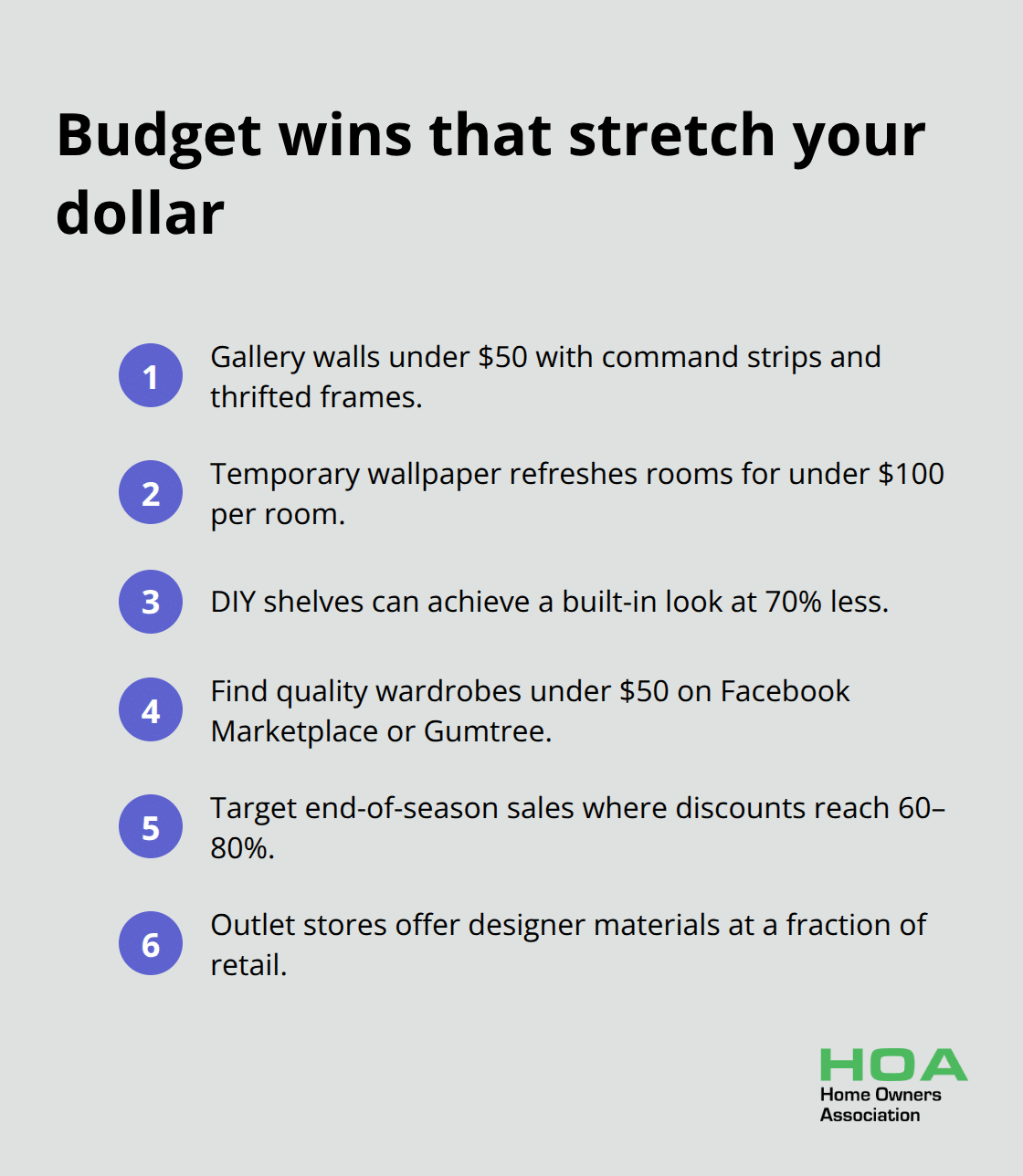
Invest in neutral foundation pieces like performance fabrics from Crypton or Sunbrella that withstand daily use. These durable materials cost more upfront but eliminate replacement expenses over time (making them more economical long-term). Purchase versatile furniture that adapts to style changes rather than trendy pieces that quickly look dated.
Repurposing and Upcycling Existing Items
Mix old and new elements instead of replace everything at once. Your furniture gains new life with different arrangements, fresh hardware, or updated upholstery. Plants like Calatheas improve air quality while they add visual interest, with at least one plant per 100 square feet effectively cleaning the air.
Rearrange furniture seasonally to create fresh perspectives without spend money. Group decorative items in odd numbers for better visual appeal, and use books both vertically and horizontally on shelves to add height variation. These small changes create significant impact when you apply them consistently throughout your space.
Final Thoughts
Successful home decoration starts when you understand your space and natural light patterns before you make any purchases. You must define your personal style through mood boards and select a springboard object to guide your decisions. Work room by room with proper measurements to avoid costly mistakes.
Apply the 60-30-10 colour rule and layer three types of light in every space. Position furniture to optimise flow while you mix wood tones for depth. These fundamental principles prevent the scattered look that comes from impulse purchases (which waste money and create visual chaos).
Budget-friendly approaches like gallery walls, spray paint projects, and strategic thrift shopping deliver maximum impact for minimum investment. Focus on high-traffic areas first and choose durable materials that adapt to trends. These tips on home interior decoration work within any budget when you apply them systematically. Start with one room and build confidence as you transform your entire home into a personal sanctuary.

